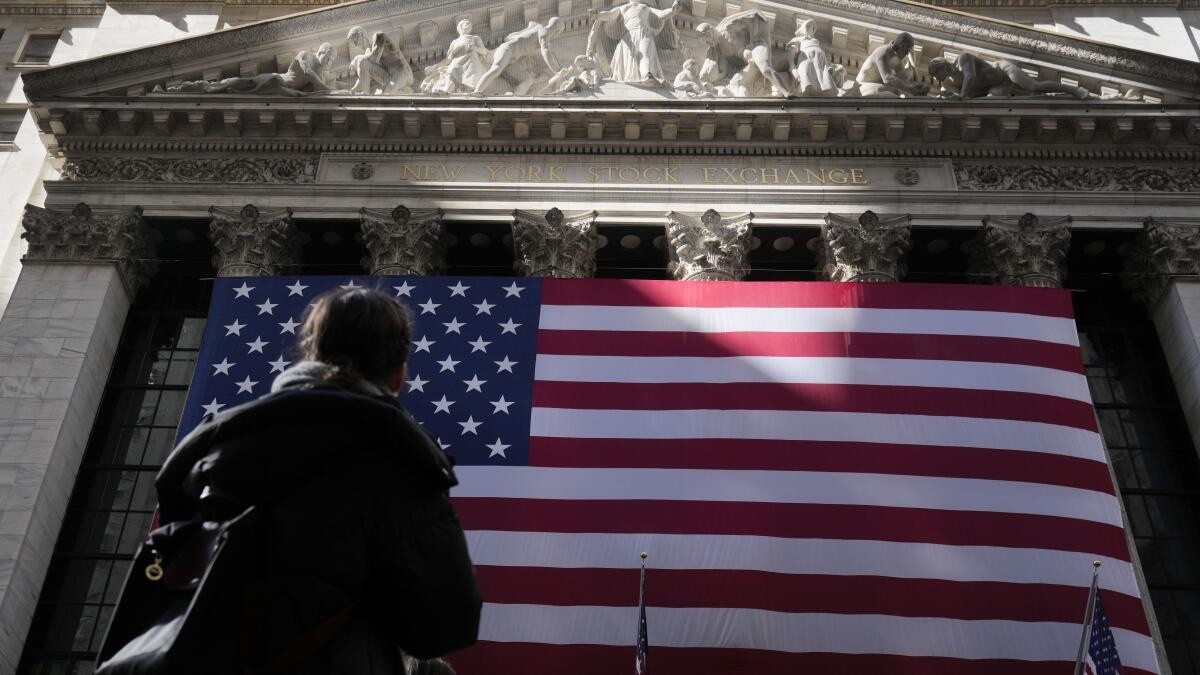
U.S. stock index futures experienced a significant decline on Friday, a downturn intensified by China’s announcement of trade tariffs on all imports from the United States. This development marks a further escalation in the trade conflict between the two largest economies, occurring just days after President Donald Trump implemented sweeping duties. Dow Jones Futures declined by 1,350 points, representing a 3.2% decrease, while S&P 500 Futures saw a drop of 180 points, also a 3.2% fall. Meanwhile, Nasdaq 100 Futures experienced a decline of 650 points, equating to a 3.2% reduction.
On Thursday, the primary Wall Street indices experienced their most significant decline in five years, following Trump’s announcement of tariffs on imports from key trading partners. This development has heightened concerns regarding a potential global trade war, which could significantly impede economic activity. The Dow Jones Industrial Average, a benchmark for blue-chip stocks, experienced a decline of nearly 1,700 points, translating to a 4% drop. Concurrently, the Nasdaq Composite, which is heavily weighted towards technology stocks, fell by almost 6%. The S&P 500, representing a wider array of industries, decreased by 4.8%, thereby re-entering correction territory with a decline exceeding 10% from its peak in February. The Nasdaq and S&P 500 are poised to record their most significant weekly declines since September 2024, marking the sixth negative week out of the last seven.
On Friday, China’s commerce ministry announced the implementation of a 34% tariff on all U.S. products, effectively mirroring the tariff imposed on Chinese goods entering the United States, which was revealed by President Donald Trump on Wednesday. This development has sparked apprehensions that the tariffs implemented by the Trump administration will provoke retaliatory measures from many of the nation’s trading partners, potentially leading to a global trade conflict and an ensuing worldwide economic downturn.
JPMorgan has increased its estimate of the likelihood of a global recession this year to 60%, up from a prior assessment of 40%, influenced by the anticipated economic shock. The action represents the most substantial tax hike on American households and enterprises since 1968, with potential implications for a considerable economic downturn if executed in its entirety, according to the assessment from the U.S. investment bank. JPMorgan projects that this will elevate the average effective tariff rate by 22 percentage points, resulting in a $700 billion tax increase, equivalent to 2.4% of GDP. “An increase of this magnitude would align with the most significant tax increase since World War II,” stated economists at JPMorgan, led by Bruce Kasman.
Analysts at UBS have adjusted their year-end 2025 projections for the S&P 500 downward, largely in response to diminished growth forecasts and heightened recession apprehensions stemming from the recent tariffs announcement. UBS has revised its S&P 500 target downward to 5,800 from 6,400, citing a worsening macroeconomic environment influenced by “one of the most significant shifts in U.S. economic policy in a generation.” Mark Haefele, Chief Investment Officer at UBS, indicated that increased tariffs coupled with diminished growth will exert downward pressure on corporate earnings in the United States. He cautioned that the risk premiums are expected to remain high due to ongoing policy uncertainty and weaker economic indicators.
Focus is now directed towards the critical jobs report for March, which is set to be released later in the session. Investors are keenly analyzing this data for insights into the U.S. economy’s health, particularly in light of escalating concerns regarding the effects of Trump’s tariffs on growth and inflationary pressures. The U.S. economy is projected to have created 137,000 jobs in March, a decrease from the 151,000 recorded in February, and significantly lower than the six-month average of 190,000 positions per month. A significant point of focus will be a forthcoming address by Federal Reserve Chair Jerome Powell regarding the economic outlook, scheduled for delivery later in this session.
In the corporate sector, Apple is poised to attract significant attention following a notable decline in its stock value, as shares plummeted over 9% in just one trading session on Thursday. Apple, as a corporation significantly dependent on Chinese manufacturing and international supply networks, is encountering heightened expenses as a result of the 54% tariffs levied on imports from China. Investors are concerned that the increased costs may adversely affect Apple’s profit margins or necessitate price increases on its products, which could, in turn, dampen consumer demand.
Furthermore, firms with significant exposure to the Chinese market experienced considerable declines, as evidenced by the sharp downturn in shares of Qualcomm and Caterpillar. Concurrently, Chinese enterprises traded on U.S. exchanges, including Alibaba, PDD Holdings, Baidu, and JD.com, also faced losses. In other developments, GameStop experienced a 4% increase following CEO Ryan Cohen’s announcement of acquiring an additional 500,000 shares, indicating a robust endorsement of the video game retailer’s prospects.
Crude is poised to experience its most significant weekly decline in several months.
Oil prices experienced a further decline on Friday, positioning themselves for the most significant weekly drop in several months. This downturn is largely attributed to the heightened risks of a global recession stemming from U.S. trade tariffs, which could adversely impact oil demand. Both contracts experienced a decline exceeding 6% on Thursday, positioning Brent for its most significant weekly loss in percentage terms since October, while WTI is set for its largest drop since January. The negative sentiment was further compounded by Thursday’s announcement that eight members of OPEC+, which encompasses the Organization of Petroleum Exporting Countries and its allies led by Russia, intend to expedite production increases.
